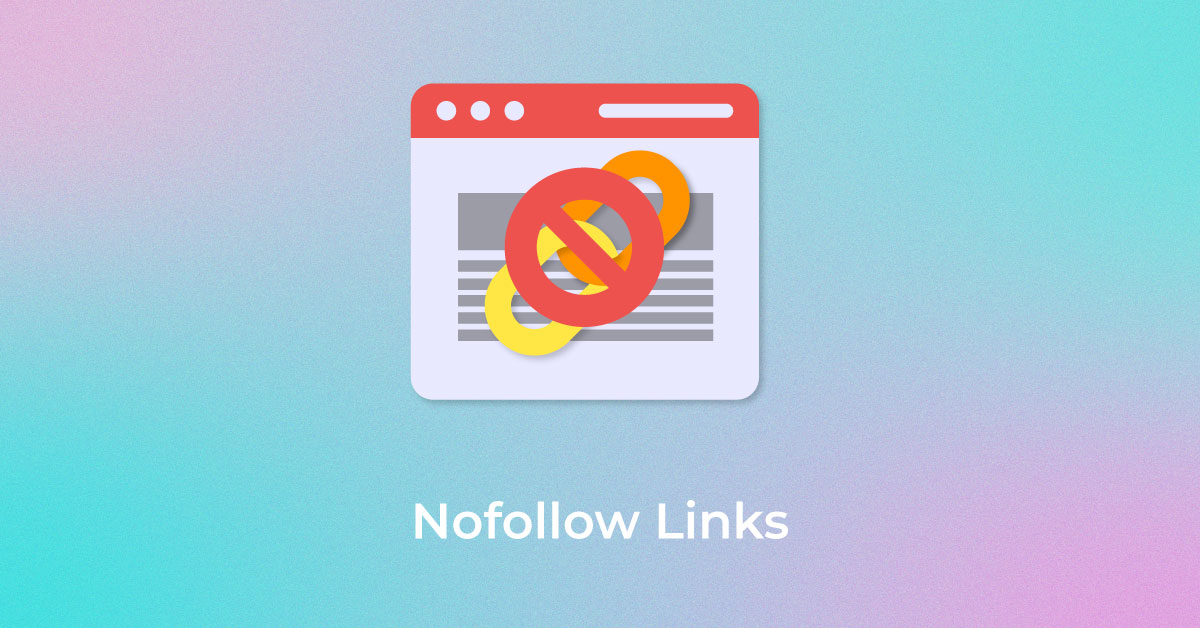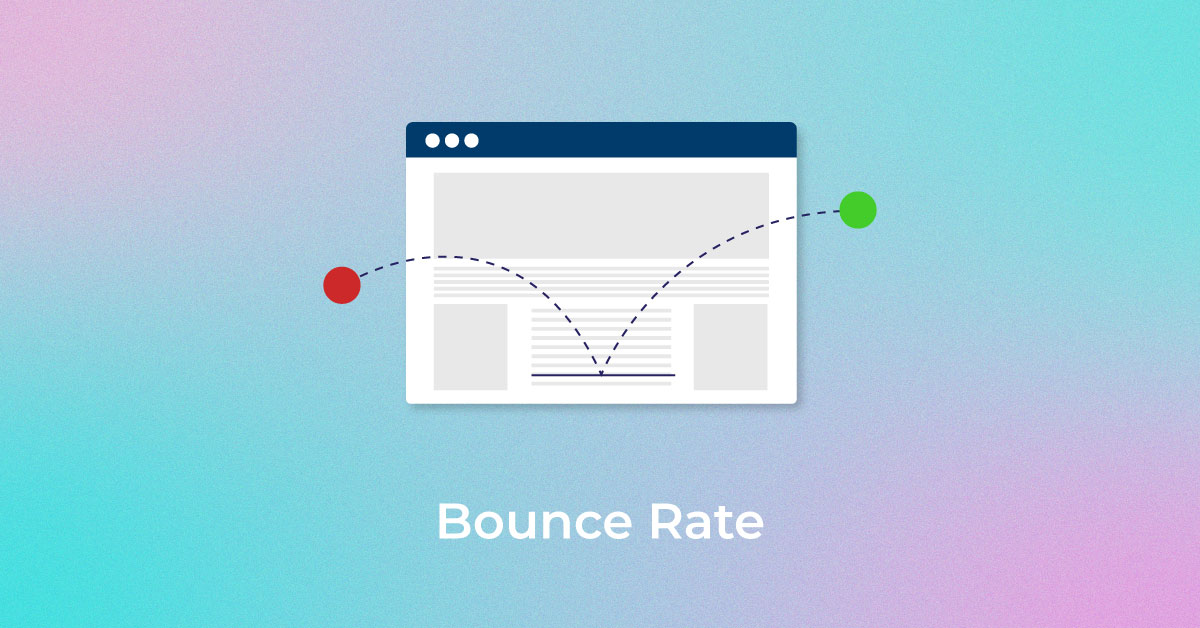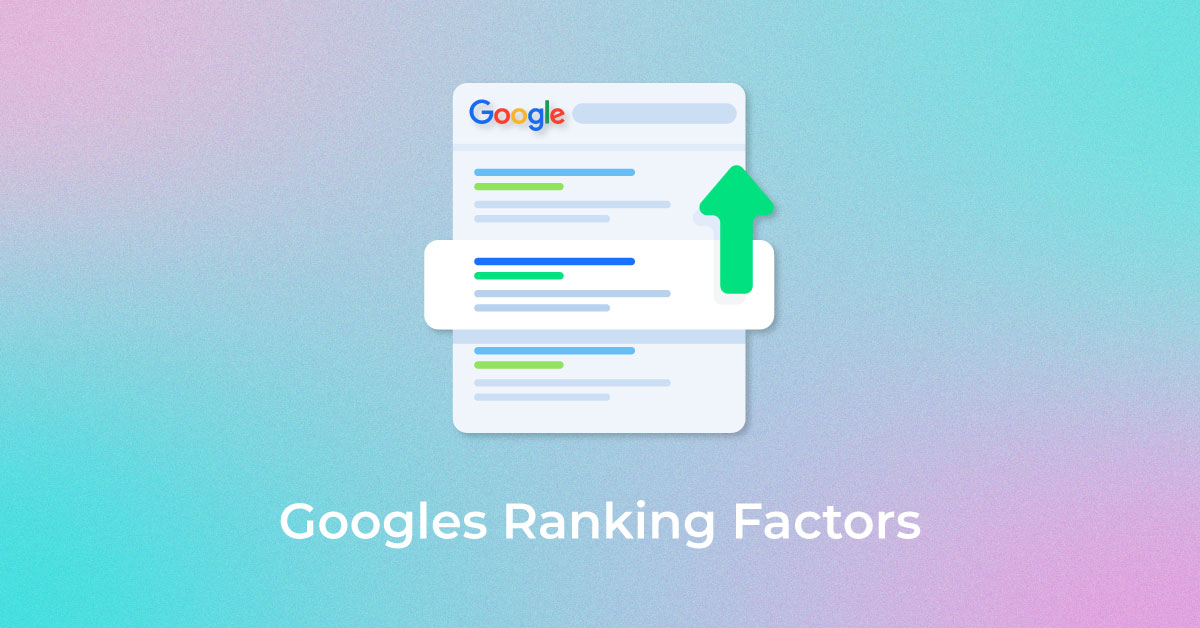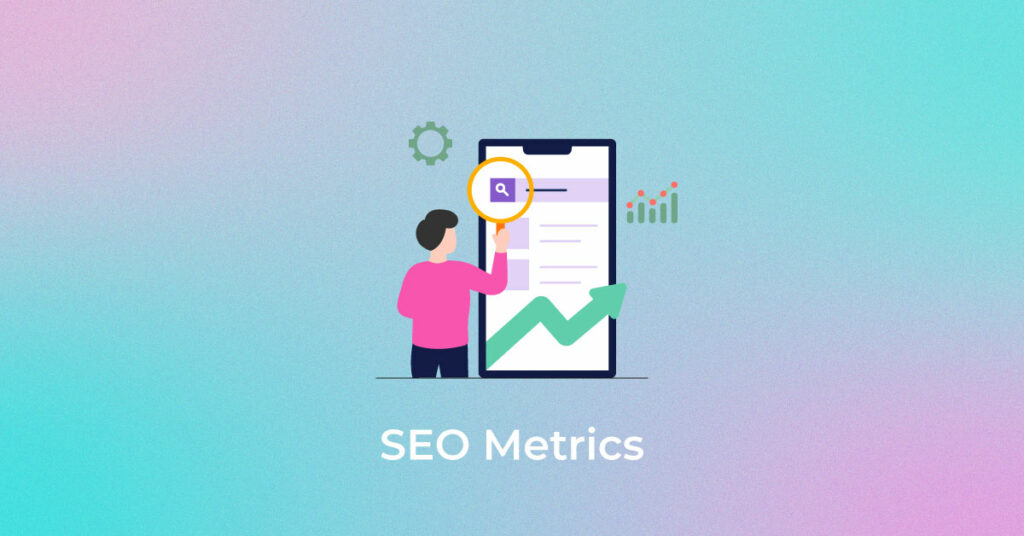“Measure it to improve it” – These words ring true to almost anything, and SEO is no exception. Measuring your website’s performance is imperative to improving it. From tracking conversions, clicks, traffic, and much more, you can get core insights into what can make your website more accessible and popular.
Here are the most critical SEO metrics that you must track and how you can track them.
1. Organic Traffic
Organic traffic is one of the most important SEO metrics. In simple terms, organic traffic is the traffic your website gets by appearing on SERPs. This is when you are not paying anything for being placed higher on SERPs.
How well your SEO strategy works can be measured by the amount of organic traffic your website is generating. This can help you figure out many things, including if your webpages are ranking for the relevant keywords in your domain.
Here are two ways in which you should measure your organic traffic:
-
Landing Pages
Organic traffic for any website is calculated across all types of pages, including landing pages, pillar pages, and much more. It is imperative that you comprehensively track the organic traffic on each landing page. Tracking organic traffic by landing pages can help you in figuring out which of your pages need more effort to rank higher.
Let’s consider a scenario. Let’s assume one-half of your pages are ranking on page 1 and the other half are appearing beyond page 5. This will help you in redirecting your SEO efforts where they are needed, so that you can improve the SEO health of the pages ranking poorly. Moreover, this approach also helps businesses running multiple SEO strategies for different webpages. Tracking organic traffic by landing page can help you identify which SEO strategies are generating better results for your website and which ones are performing poorly.
-
Location
If your SEO strategies are built to generate traffic from a certain geographical location, it’s crucial to identify the source of the organic traffic. Look at it this way – if your business only operates in a single country but most of your organic traffic is coming from a different country, you will have to update your marketing strategy.
The first thing you should do is track your website’s organic traffic by filtering the country region. This will also give you valuable insights as to which country most of your organic traffic is coming from. If you have plans on expanding into that region or are already operating there, this can prove to be a goldmine of insight for your marketing strategy.
Unlock higher rankings, quality traffic, and increased conversions through tailored award-winning SEO strategies.
Elevate your web presence by Infidigit’s SEO solutions.
Unlock higher rankings, quality traffic, and increased conversions through tailored award-winning SEO strategies.
2. Click-through Rate
Google Search Console or GSC can help you in tracking many SEO metrics, including Click Through Rate (CTR).
CTR is a metric that helps you in finding the average percentage of users who are clicking on any of your links in the SERPs. This stat is imperative in determining if your content is appealing and doing its job in encouraging users to visit your pages.
Through GSC, you can generate a report from the Search Analytics tool which shows you the CTR of your pages. You must check your CTR by the top keywords in your domain. If you see that certain keywords or search terms are getting your webpages the most clicks, you know which pages you should optimize for those terms. This activity is important because you would want to ensure that the content on those pages accurately reflects the intent of users searching for them.
Similarly, if your CTR is low for valuable or top-ranking keywords, you know that you need to optimize your pages for those terms. It might even turn out that the titles or the descriptions are not enticing enough and need an update.
3. Core Web Vitals
Google also measures the user experience of your website. While SEO performance of your website is still important, the core web vitals report helps Google in sizing up the performance of your website.
Google uses RankBrain, its AI-based algorithm that measures metrics like page speed, performance, time spent on the website, and much more. This helps the search engine in analyzing how well the users are interacting with your website.
You must keep a close eye on your core web vitals report to get the larger picture of how Google is perceiving your website, and how you can improve it.
4. Bounce Rate
Bounce rate is the percentage of people bouncing or leaving your website after minimal interaction or only viewing a single page. The lower your bounce rate is, the better your website’s ranking would be.
If you are seeing higher bounce rates on your website, you need to do some on-site updates to ensure that the visitors are sticking around. A good way to approach this is checking the bounce rate of landing pages and identifying which ones have a higher bounce rate. This could help you locate the issue with those landing pages and optimize them based on the good-performing landing pages.
Bounce rates are also important to measure because they give you a holistic overview of any running strategies and whether they are working or not. For instance, if you are running a marketing strategy aimed at increasing sales through your website, your bounce rates should go down to indicate that the strategy is working. If the bounce rates go up, you know there is scope for improvement in your marketing strategy.
5. Conversion Rate
Generating a high amount of organic traffic can only take your website so far. It is not useful unless you are actually converting the visitors into customers. This is why you must keep a track of your conversion rate to see how well your content and marketing strategies are working.
To check how appealing your content and website are to visitors, you can keep an eye on the aggregate conversion rate gained from the organic traffic. This will also help you in figuring out what other segments of your website are boosting or reducing the conversion rates.
Here are the factors you should consider when analyzing conversion rates:
-
Location
If your website’s conversion rates are higher in a certain geographical location, it’s a sign that your marketing efforts are more appealing to people in that region. This will help you in refining your marketing strategy and targeting the geographical locations generating the most business for you. Moreover, tracking the location of the conversions can also tell you which regions need your messaging to be optimized for improving conversion rates.
-
Devices
Appealing to all types of demographics means you also need to heavily appeal to mobile users. If you track your conversion rates by device, you’ll discover if your website is generating business from mobile users or not. Over 50% of the searches were conducted on mobile devices in 2020, which is why you must optimize your website for mobile devices.
If you find that your conversion rates are higher for desktop users, there’s an issue with the mobile version of your website.
-
Landing Pages
Conversion is a game that is usually won on the landing pages. Tracking conversion rates by landing pages can let you know which pages are performing well and which ones need their messaging updated to improve the rates.
6. Top Exit Pages
Exit pages might be the ones that can be the root problem with your websites. These are the final pages that users visit before they close your website.
Finding out the top exit pages on your website can help you in understanding which pages are causing the visitors to lose interest in your website. Finding out the top exit pages, and improving them can help you in reducing your website’s bounce rates,
7. Index Pages
Your webpages won’t appear on SERPs if they are not indexed by search engines. This is why you must regularly check on GSC which pages of your website have been submitted to Google and which ones have been indexed.
If any of your webpages are taking too long to be indexed, you can manually submit those pages to Google from the GSC to fasten the process of improving your SEO ranking.
8. Page Speed
We already talked about how UX is considered an SEO factor. How fast your pages load is a major factor for UX. Using tools like Google’s PageSpeed Insight, you can conveniently track the ratings of your landing pages. The tool assigns a rating to each of your pages and also suggests ways in which you can optimize their loading speed.
Along with this, you also should keep an eye out on the following two metrics:
- Time to First Byte – The amount of time it takes the browser to receive and process the first byte of your website
- Page Load Time – The total amount of time it takes your webpage to load and display its full content
9. Keyword Rankings
You must be aware of the keywords your website is ranking high in. Using tools like Ahrefs and SEMrush, you can find out all the keywords your website is ranking for on Google.
For creating SEO strategies, identifying the keywords your website is ranking for can also help you in creating campaigns that target valuable keywords that you’re not ranking for yet.
It is also a smart approach to continue your marketing campaigns for high-converting and high-ranking keywords that your website is already ranking for. These keywords will bring a lot of organic traffic, and possibly conversions if the pages associated with the keywords are appealing to the users.
10. Domain Authority
Increasing the domain authority of your website is one of the main goals of any SEO strategy. Domain authority is imperative in establishing your website as a leader in your domain in the eyes of Google. DA is a logarithmic scale that is calculated by considering various factors like high-quality backlinks, content quality, references, and much more. The higher your DA, the more Google will trust your website.
You can calculate your webpages’ DA by using tools like Moz’s Link Explorer tool and Website Authority Checker. You just need to enter your domain name in the tool, and it will show the DA rating of your domain from 1-100.
11. Backlinks
Backlinks are off-page SEO elements that significantly impact the SEO performance of your website. Webpages that have more high-quality backlinks will reign over pages with identical on-page metrics.
The number of referring domains is closely related to the rankings of websites, as found in a study analyzing over a million search results.
Keeping track of the number of backlinks your website has can help you in driving your SEO strategy. Moreover, backlinks are also a major player in increasing your domain authority, as previously stated.
Tracking backlinks can be carried out by tools like GSC, SEMrush, MonitorBacklinks, etc. Here are the three factors you would want to keep an eye on while tracking backlinks:
- Accuracy – The accuracy of the linked pages, which shows follow and no-follow links separately. You should also track the backlink source’s DA, along with the anchor text.
- Update Frequency – Tracking new backlinks as and when they appear. You should immediately know if your website has gotten a new backlink to check the source and analyze the backlink’s quality.
- Trends – You also must track if you are losing or gaining new backlinks as time goes on, to see the general trend of your website.
12. Tracking Mobile Traffic
As previously stated, tracking organic traffic by the device is imperative in knowing how flexible your website is. If your website is not properly optimized for mobile devices, you might end up losing significant business and conversions. Google introduced mobile-first indexing in 2019 and it has become more important to optimize your website for mobile devices than ever before. Use tools like Google Analytics to see detailed reports regarding the mobile traffic you’re getting, and even your website’s SEO rank on mobile devices.
13. Local Search Visibility
This is one of the many local SEO metrics that can help you in boosting your rankings in specific locations. Local search visibility is a metric that includes on-demand tracking of local search terms, and reporting and updating your business information based on your findings.
14. Coverage Errors
Coverage errors in the simplest terms are indexing and crawling issues with your website. If you’re running a big website with over 1000 pages, it’s not always possible to keep coverage errors to zero.
However, you must regularly monitor your entire website for these errors, as they can lead to your website being down ranked on SERPs. GSC can help you find all the coverage errors of your website, like detecting pages that are marked “noindex”. These pages have not yet been indexed by Google, and won’t show up on any SERPs.
Put These SEO Metrics to Good Use
Now that you know about the most important SEO metrics to track, it’s time to start measuring them and putting the insights to good use. A professional SEO company like Infidigit can prove to be of great help here. With years of experience and expertise in enhancing the SEO of various clients, Infidigit can help you in monitoring these SEO metrics and boosting your website’s rank.
Popular Searches
How useful was this post?
0 / 5. 0

















